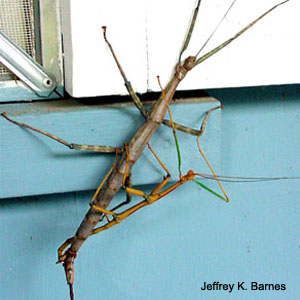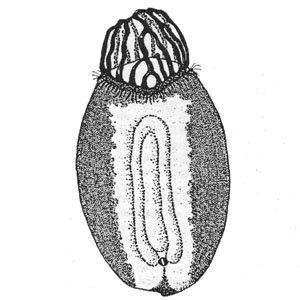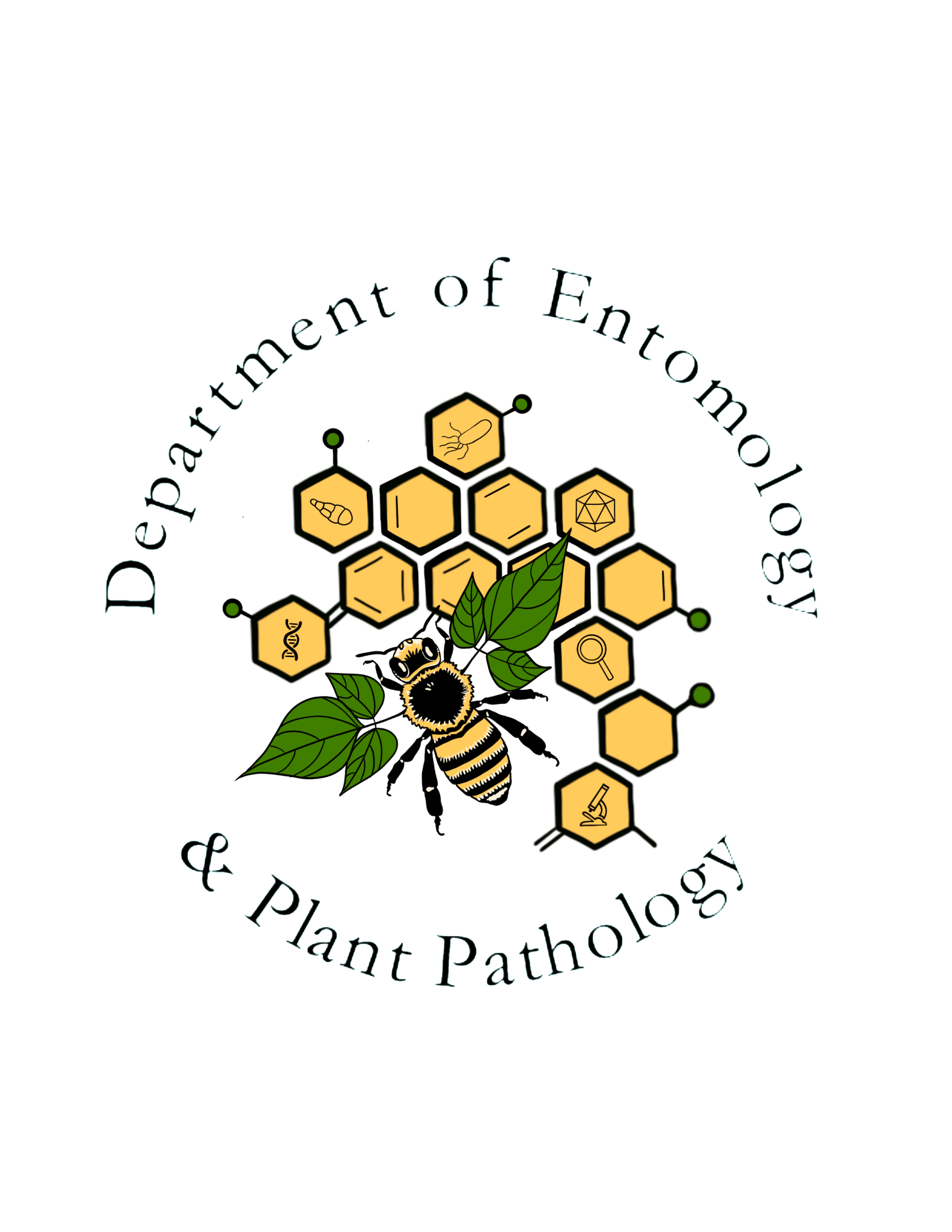Giant walking stick
Order: Phasmatodea
Family: Heteronemiidae
Genus and species: Megaphasma denticrus (Stål)


Insects in the Order Phasmatodea are referred to as the walking sticks and leaf insects. The various species have evolved to resemble sticks, twigs, or leaves, thus affording them the advantage of spectacular camouflage to hide from potential predators. All North American species resemble sticks. They are slow-moving herbivores. They enhance their camouflage by swaying back and forth in breezes, thus enhancing their resemblance to twigs. Walking sticks can lose legs when attacked by predators, and, unlike most insects, they can regenerate them, at least in part. All walking sticks from the United States are wingless except for one species from southern Florida. Giant walking sticks are among the largest insect in North America. Females can reach lengths of more than six inches. They are common inhabitants of Arkansas woodlands. Individuals and mating pairs are often found among tree and shrub foliage. Captive individuals have been observed consuming elm leaves. Captive males drink water by immersing their heads below the surface for several minutes. Giant walking sticks are most often found in forested areas of the south central United States, but overall their range extends from Indiana, Kentucky and Alabama in the east, to the area bounded by Wisconsin, Iowa, Kansas, and New Mexico. Representative habitat and food plants include grass, grape, oak, elm, and mesquite. Giant walking sticks are sexually dimorphic. Males are usually considerably smaller than females. They are not aggressive toward other males when in close proximity, and they do not appear to compete with one another for females. Copulating pairs remain engaged for periods of several hours. Females produce around a dozen eggs per day for several months. They simply scatter the seed-like eggs on the ground. Eggs are about 4 mm long, bicolored light and dark brown, and have an irregular surface texture due to closely packed, fine tubercles. At one end, they have a hollow, grill-like cap with a circlet of setae attached at the base. There is a single generation per year, with the egg stage overwintering.
